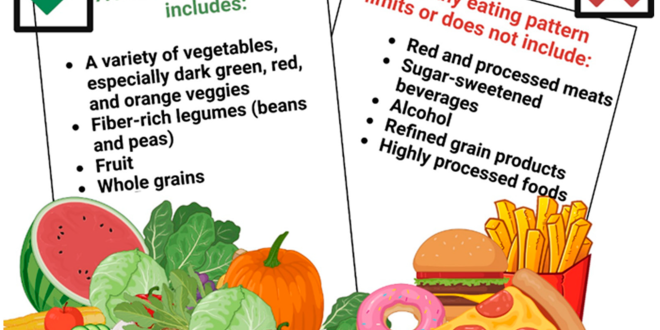Ultra-processed foods (UPFs) have taken over our plates, haven’t they? A whopping 60% of what Americans eat now falls into this category. That’s… a lot. It makes you wonder who’s eating most of this stuff and what it’s doing to them. So, let’s dive into who might be at the biggest risk from this ultra-processed food takeover, shall we?
Understanding Ultra-Processed Foods
Defining Ultra-Processed Foods
Okay, so what exactly are ultra-processed foods? Well, think of them as foods that have gone through the wringer. They’re not just simply processed like canning veggies, they are manufactured industrially. They often contain ingredients you wouldn’t find in your kitchen, like artificial colors, flavors, and a whole bunch of preservatives. They’re made to be super appealing, convenient, and have a long shelf life. I mean, who hasn’t grabbed a brightly colored snack at the checkout?
Examples of Common Ultra-Processed Foods
You probably eat them all the time. Soda, chips, packaged cookies and cakes, processed meats like hot dogs and sausages, and even some breakfast cereals fall into this category. Instant noodles, frozen meals loaded with additives… the list goes on and on. Honestly, it’s kind of scary how much of our daily food is actually ultra-processed. Makes you think twice before grabbing that quick snack, doesn’t it?
The Prevalence of UPFs in US Diets
Statistics on UPF Consumption
Like I said, about 60% of the average American’s diet is ultra-processed. That’s a huge chunk! Studies have shown that the US is one of the highest consumers of these foods globally. And, honestly, when you walk down the aisles of any grocery store, it’s not hard to see why. It’s all just so… available.
Trends Over Time
Here’s the kicker: it’s getting worse. Over the past few decades, UPF consumption has steadily increased. As lifestyles get busier, people are turning to quick and easy options, and guess what? Those are often ultra-processed. It’s a vicious cycle, right? And it’s not just in America; many countries are seeing similar trends. The rise of fast food and convenience meals has definitely played a significant role.
Who Faces the Greatest Risk?
Socioeconomic Disparities
Unfortunately, not everyone is equally affected. Lower-income communities often rely more heavily on UPFs. Why? Because they’re cheaper and more readily available than fresh, whole foods. It’s a sad reality that those who can least afford nutritious options are often stuck with the worst choices. It just doesn’t seem fair.
Age and Dietary Habits
Kids and teenagers are also at higher risk. They’re bombarded with ads for sugary drinks and processed snacks. Their taste preferences are still developing, and these foods are designed to be addictive. Plus, let’s be real, convincing a kid to choose broccoli over a bag of chips is an uphill battle, isn’t it?
Geographical Factors
Where you live also matters. In urban food deserts or rural areas with limited access to grocery stores, UPFs become a staple. It’s simply a matter of what’s accessible. If your local store is stocked with mostly processed items, what else are you gonna eat? It’s a systemic problem, no doubt about it.
Health Risks Associated with High UPF Consumption
Increased Risk of Chronic Diseases
Here’s the scary part. High UPF consumption is linked to a higher risk of obesity, type 2 diabetes, heart disease, and even some cancers. All those additives, unhealthy fats, and sugars aren’t doing anyone any favors. It’s like a slow burn, damaging your body over time. Not good.
Impact on Gut Health
Don’t forget your gut! UPFs can mess with your gut microbiome. These foods often lack the fiber and nutrients that good bacteria need to thrive, leading to an imbalance that can cause digestive issues and even affect your immune system. A happy gut equals a happy life, or so they say!
Mental Health Implications
And get this – there’s growing evidence linking UPF consumption to mental health problems like depression and anxiety. The connection isn’t fully understood yet, but it’s thought that inflammation and changes in brain chemistry could play a role. It’s all connected, isn’t it? Food really does affect how we feel, both physically and mentally.
Factors Contributing to High UPF Consumption
Affordability and Accessibility
Let’s face it, a bag of chips is often cheaper than a bag of apples. And it’s much easier to grab a ready-made frozen meal than to cook something from scratch. For many people, it’s a matter of budget and convenience. It’s hard to make healthy choices when you’re on a tight budget, I get it.
Marketing and Advertising Strategies
The food industry spends billions on marketing UPFs. They’re designed to be irresistible, targeting kids and vulnerable populations with flashy ads and tempting promotions. Ever notice how commercials for healthy foods aren’t nearly as catchy? It’s a battle against sophisticated marketing tactics, and it’s not always easy to win.
Convenience and Time Constraints
In today’s fast-paced world, who has time to cook? Grabbing a quick, processed meal seems like the only option when you’re juggling work, family, and everything else. It’s a constant trade-off between health and convenience. Time is money, but is it worth sacrificing our well-being?
Strategies for Reducing UPF Intake
Making Informed Food Choices
Start by reading labels. Educate yourself about what’s actually in the food you’re eating. Look for long lists of ingredients you can’t pronounce – that’s usually a red flag. It takes a little effort, but it’s worth it. Your body will thank you, eventually.
Cooking at Home More Often
I know, easier said than done. But even small changes can make a difference. Try cooking one or two extra meals at home each week. It doesn’t have to be fancy; simple, home-cooked meals are often healthier and tastier than anything you can buy pre-made. Plus, you know exactly what’s going into your food!
Advocating for Policy Changes
Ultimately, addressing this issue requires systemic change. Support policies that promote access to healthy foods and regulate the marketing of UPFs, especially to children. It’s about creating a food environment that supports health for everyone, not just those who can afford it.
So, there you have it. Ultra-processed foods are a big part of our diets, and some of us are definitely more at risk than others. But it’s not all doom and gloom! By making informed choices, cooking at home when we can, and advocating for change, we can start to push back against the UPF takeover. What do you think? Ready to give it a shot? I know I am… or at least, I’ll try to be!
 Beverage Zone
Beverage Zone




